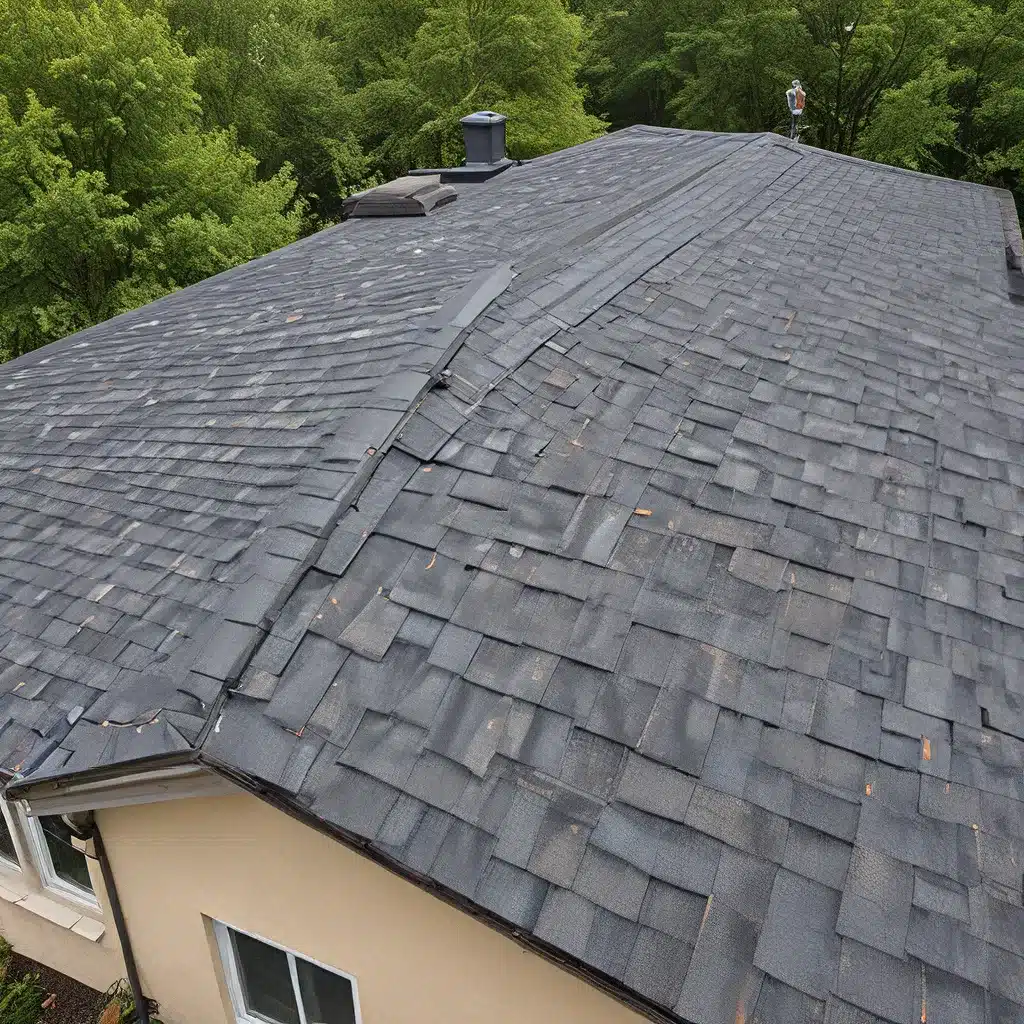
As a homeowner, the roof over your head is more than just a structural necessity – it’s a vital component that protects your family, your belongings, and your investment. But what if I told you that your choice of roofing material could also play a role in safeguarding the environment? That’s right, folks – sustainable roofing is a thing, and it’s time we explore how it can benefit both you and the planet.
Keeping Cool: The Power of Reflective Roofs
Let’s start by talking about cool roofs. These aren’t just a trendy fad – they’re a legitimate strategy for reducing energy consumption and mitigating the dreaded heat island effect. You see, traditional roofing materials can get as hot as 150°F on a sunny summer day, making your air conditioner work overtime to keep your home comfortable. But a cool roof, designed to reflect more sunlight and absorb less solar energy, can stay more than 50°F cooler under the same conditions.
This temperature difference doesn’t just keep your living space more pleasant – it can also lead to significant energy savings. In fact, the U.S. Department of Energy reports that cool roofs can reduce a building’s energy use by 7% compared to conventional roofs. That’s money back in your pocket, my friends, and a win for the environment too.
But cool roofs aren’t just limited to the traditional white or light-colored options. Thanks to advancements in roofing technology, you can now find cool-colored products that reflect just as much sunlight while still offering the aesthetic you desire. So whether you’re partial to the classic look of asphalt shingles or the rustic charm of clay tiles, there’s a sustainable roofing solution out there for you.
Going Green: The Benefits of Living Roofs
Now, if you really want to take your roofing game to the next level, let’s talk about green roofs. These innovative systems feature a layer of vegetation growing on top of the roof, providing a host of environmental benefits that go beyond just keeping your home cool.
For starters, green roofs are fantastic at reducing and filtering stormwater runoff. By absorbing rainfall and slowly releasing it back into the ground, they can help prevent the kind of flash flooding that can wreak havoc on local infrastructure. And as an added bonus, the plants on a green roof can also remove pollutants from the air, improving the overall air quality in your neighborhood.
But the benefits of green roofs don’t stop there. These living, breathing systems can also provide natural habitat for birds, bees, and other local wildlife, helping to offset the impact of urbanization. And in the case of intensive green roofs – the ones with more substantial soil depth and larger plants – they can even serve as recreational spaces, giving you and your family a lush, verdant oasis right on your rooftop.
Of course, the tradeoff with green roofs is that they tend to be more expensive to install and maintain than their conventional counterparts. But when you factor in the long-term savings on energy and stormwater management fees, as well as the potential for increased property value, the investment can be well worth it. Plus, if you’re lucky enough to live in a city or municipality that offers incentives for green roof installation, the financial barrier might be even lower.
Balancing Costs and Benefits
Speaking of costs, I know what you might be thinking: “But wait, isn’t sustainable roofing more expensive than traditional options?” Well, the truth is, it depends. In some cases, cool roofs can actually be cost-competitive with conventional roofing materials, especially if you’re building a new home or replacing an existing roof.
However, retrofitting an existing roof to be more sustainable can certainly come with a higher price tag. That’s where you need to weigh the long-term benefits against the initial investment. According to a study from the Lawrence Berkeley National Laboratory, while green roofs are more expensive than cool or conventional roofs, they provide significantly higher benefits per square foot over a 50-year lifecycle, including energy cost savings, reduced emissions, and lower stormwater management fees.
So, the question becomes: Are you willing to pay a little more upfront to reap the long-term rewards of a sustainable roofing system? For many homeowners, the answer is a resounding yes. After all, isn’t protecting the environment and your family’s comfort worth the investment?
Choosing the Right Roof for Your Home
Of course, when it comes to sustainable roofing, there’s no one-size-fits-all solution. The best option for your home will depend on a variety of factors, including your local climate, your budget, and your personal style preferences.
If you live in a hot, sunny region, a cool roof is likely to be your best bet for reducing energy costs and keeping your home comfortable. But if you’re in a colder climate, you’ll need to carefully consider the potential winter heating penalty that can come with a highly reflective roof.
And if you’re looking to go the extra mile with a green roof, make sure your home’s structure can support the additional weight and that you’re prepared to handle the ongoing maintenance requirements. Southern Roofing Company can help you navigate these considerations and find the perfect sustainable roofing solution for your needs.
The Future of Sustainable Roofing
As we look to the future, I’m excited to see the continued evolution of sustainable roofing technologies. Who knows what innovative materials and design strategies will emerge to make our homes and communities even more eco-friendly?
One thing’s for sure: Sustainability is no longer just a nice-to-have – it’s a necessity. And as homeowners, we all have a role to play in protecting our planet, one roof at a time. So, are you ready to embrace the power of sustainable roofing and help create a greener, more resilient future? I sure hope so, because the possibilities are endless, and the rewards are undeniable.